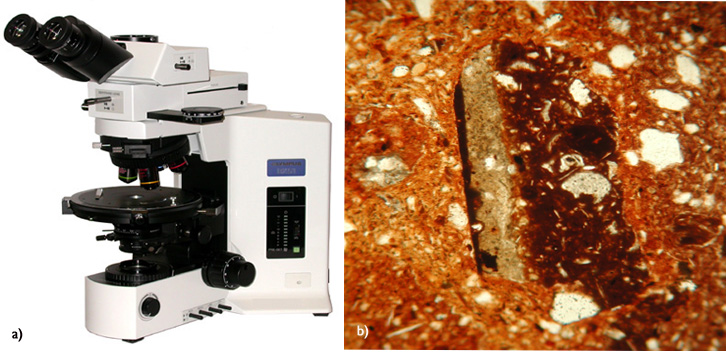This website uses cookies so that we can provide you with the best user experience possible. Cookie information is stored in your browser and performs functions such as recognising you when you return to our website and helping our team to understand which sections of the website you find most interesting and useful. More information in our Privacy Policy
Optical microscope with polarized light
Supervisor: Sabrina Gualtieri
The optical microscope in polarized light provides information about mineral-petrographic composition and microstructure of ceramic materials or stones.
In the polarizing microscope the light beam comes from the bottom and crosses the sample. The observations is possible because the optical properties of the minerals composing the materials are exploited. To make this, it is necessary to prepare the sample in suitable manner that consists in cutting a slice from the sample and reducing it in thin lamina (30 microns approx.) in order to be crossed by the light beam.
The polarizing microscope provides information on:
microstructure:
• shape-distribution-dimension-agglomeration-orientation of the grains;
• shape-distribution-dimension of macro-pores (vacuoles);
• feature of matrix/groundmass (color, level of isotropy, homogeneity, level of fineness, etc.)
• presence of different layers;
mineralogical and petrographic composition:
• type and abundance of mineral phases;
• type and origin of secondary re-crystallization
• typology of degradation forms
All the recovered information gives a contribution in the reconstruction of the working technology, in the individuation of the type of the raw materials used and consequently in the delimitation of a provenance area and also in the identification of the stone material.
Olympus BX51 is equipped with 4 objectives (4x; 10x; 20x; 40x) and fluorescent filters. It can be equipped with a NIKONDSFi2 video-camera to provide good quality photos.

